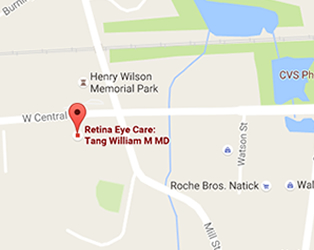Low Vision Information
Overview
Despite all the advances that modern medicine can bring, many patients still live with low vision. There is help available for these patients. Many patients with impaired vision, when given appropriate low vision aids and training, can learn to read, do work, or sometimes even drive, and so function more independently. Even patients who are legally blind can improve their quality of life by low vision services.

Low Vision Evaluation
If you think you need a low vision evaluation, please let us know. We would be happy to review your situation and help you arrange to see a low vision specialist. A low vision specialist is a eye care profession with specialized training in helping patients with low vision. Every patient is unique. Just as there are many different causes for vision problems, there are also many different ways low vision can affect a person’s life. For example, patients with age-related macular degeneration primarily have loss of central vision, whereas patients with advanced glaucoma have loss of peripheral vision. By taking a thorough vision and medical history and asking some pertinent questions, an accurate assessment of the impact that low vision has on everyday life can be made. The areas of visual difficulty and their causes can then be addressed, as well as the patient’s realistic expectations. The goal is to help patients achieve the highest visual function possible.
Low Vision Devices
Low vision services include a number of assistive devices to be used to aid in typical activities. These can be helpful in maintaining personal independence and putting the vision that the patient does have to its best use. Certain aids can help you perform specific tasks at a particular visual distance. Some examples are:
There are also therapeutic strategies that can help enhance visual skills and make the most of the vision you retain. Vision training can maximize your remaining eyesight by teaching you to avoid looking through a blind spot. Instead, training helps to redirect the eye to view things from the side or around the blind spot.
Legal Blindness in Massachusetts
In Massachusetts, the definition of “Legally Blind” is:
In most cases, legal blindness does not mean total blindness. Many patients who are legally blind can still enjoy many visual activities of daily living.
Benefits available for patients with legal blindness include:


